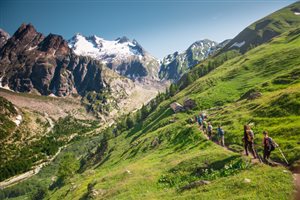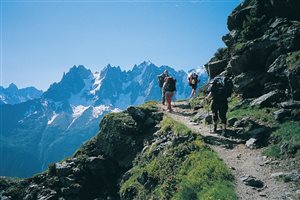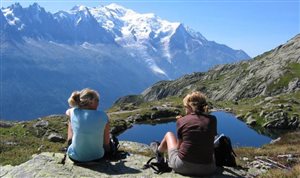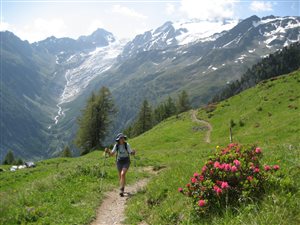Facts and Statistics

About the Trail
The TMB remains one of the most popular when it comes to long-distance hiking in Europe. It goes around the Mont Blanc Massif with an estimated distance of 170 kilometers. 10 kilometers of that involves ascending and descending as you pass through parts of France, Italy and Switzerland.

You are going to pass seven valleys along the route, as you circle around the Mont-Blanc massif. Over the course of the years, the official trail has been changed giving birth to many variants or alternatives. Some of these routes will take you to some paths that need awareness, greater fitness, and skill. Other alternative routes have been designed for the beginners, so that they can enjoy the hike without the tough physical demands.
Although the less demanding routes are quicker, the viewpoints on the mountain ranges are much lesser. Some section of the trail, between Brevent and Bonhomme, the route coincides with the GR5, a European long distance trail. There is plenty accommodation along the way. This makes it possible for the route to be broken down into different sections, to suit any traveler.
The highest points on the TMB are the Fenêtre d’Arpette on the Swiss side and Col des Fours on the French side at an altitude of 8,743 ft. although this altitude is not high enough to lead to altitude sickness, the trail itself is physically demanding. It is important to have experience in mountain walking. Apart from that, you should be suitable equipped considering the rapid change of mountain weather.
Hiking the TMB

One stage that is normally tough for many hikers is the section between Les Contamines and Les Chapieux. It is a 13 miles walk characterized by a total ascent of 4,692 feet, to cross the Croix du Bonhomme. The other tough stage you are likely to encounter is the section between Courmayeur and Rifugio Bonatti.
The huts and villages along the way determine the distances to be covered during the day. If you are a thru-hiker, there are several villages and towns along the trail that can provide a suitable rest. You can do it over two holidays, dividing the trail into north and south halves or complete it over a long weekend.
Underfoot

You are also going to encounter country lanes, such as the 4.5km section near Chapieux. The trail is properly marked throughout. However, the swiss side tends to have better signage. It is important to understand how to read a map and use a compass, or at least be in a group where one individual can handle the navigation.
During summer there is snow falling on more than two occasions and it disappears quickly. However, when it remains, it can make navigation very challenging. When the trail is covered with snow, the ground features tend to be hidden. This means that you have to rely more on compass and mapping skills.
Unexpected Weather

Although it should be considered a summer Alpine trek, it is good to be prepared for falling snow during summer. Having said that, the TMB should be visited any time from july to mid September. It is a short window, but the main determinant is the weather. There are high chances of snow patches remaining in the high passes in June while the weather might deteriorate from September.
Accommodation

Conclusion
The TMB is characterized by exhilarating walks leading to stunning views, the red and green hues of Aiguilles Rouges and Aiguille Verte, the arc of Col de Tricot and the amazing peaks of Mont Dolent. You may want to bring your camera. Along the trail, you get a chance to cool yourself in glacial streams, sip hot chocolate in mountain lodges and spot ibex in mountain passes. It is the ideal experience to spend your time in the wild.
YouTube User ‘Pure Adirondacks’ Hikes Mont Blanc
Navigation
[jbio template=”bootbomb0″]

0 comments